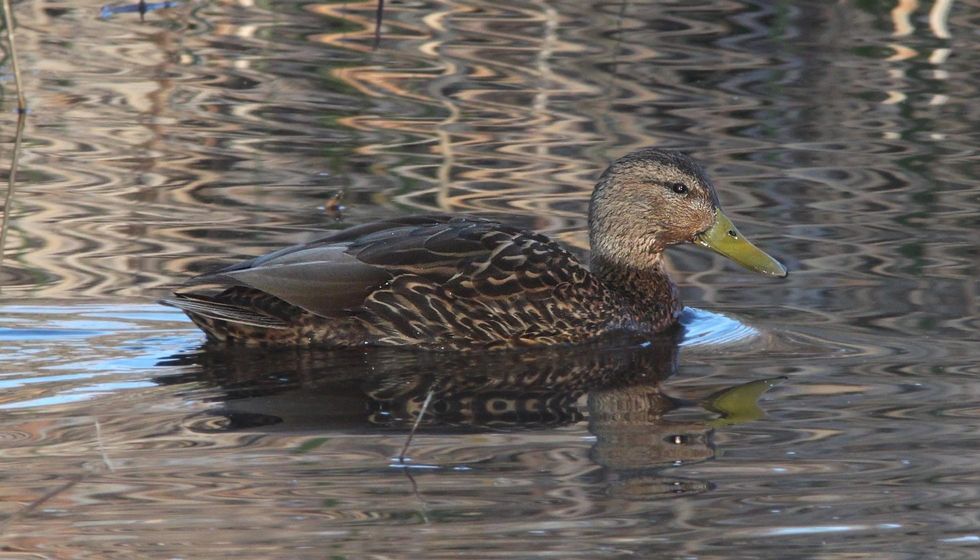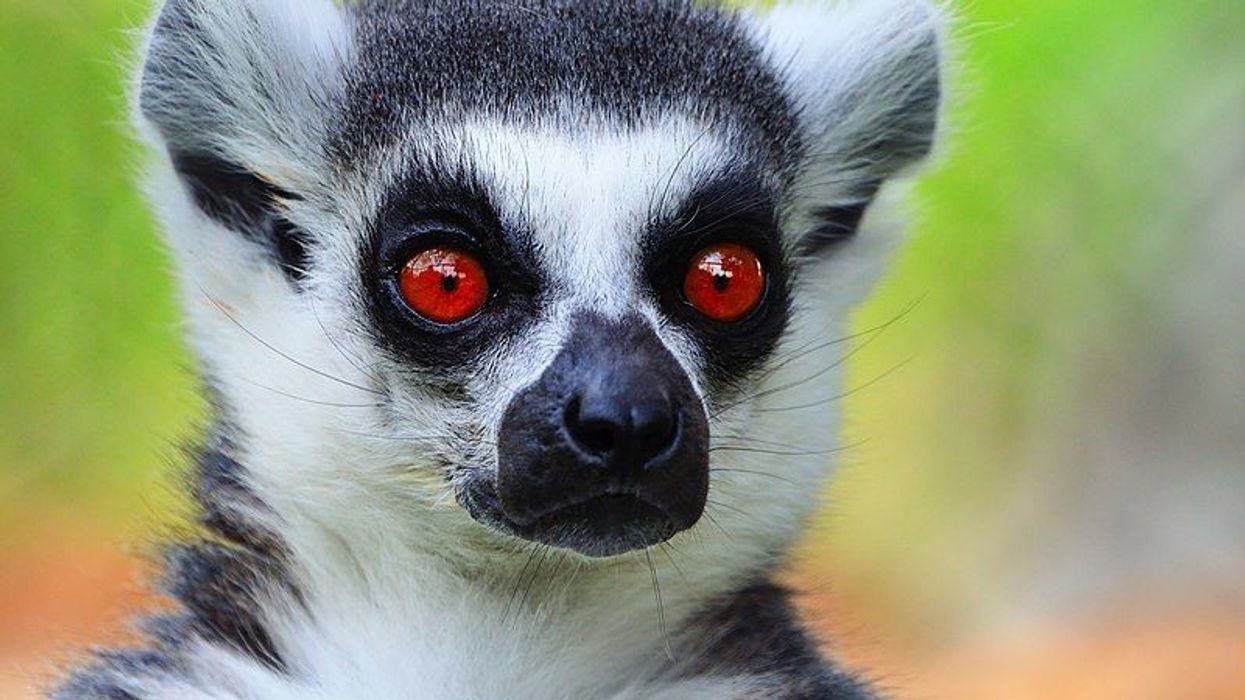The Mexican duck (Anas diazi) is one of the dabbling ducks of the genus Anas, found across North and Central America. This bird has been in the news recently because of its newfound status as a separate species. Until now the Mexican duck was considered to be subspecies of the Mallard Duck.
Mallard Ducks (Anas platyrhynchos diazi) is a common North American duck. It has several subspecies under them in its group.
Even though these birds have a visibly distinct phenotype, population genetics studies have found it difficult to find evidence for the same. This is attributable to excessive hybridization among the birds. Finally, in 2020, the American Ornithological Society, or AOS, awarded it a species status.
Read on to more about its physical features, breeding practices, and other facts!
Did you find this account of Mexican birds engaging? Check out Harlequin duck facts and Muscovy duck facts as well!
Mexican Duck Interesting Facts
What type of animal is a Mexican duck?
Mexican ducks are dabbling ducks that are primarily found in Mexico.
What class of animal does a Mexican duck belong to?
Mexican duck belongs to the class Aves of the Kingdom Animalia. This species belongs to the family Anatidae.
How many Mexican ducks are there in the world?
Mexican duck population is one the smallest amongst the North American waterfowls. A recent estimate listed the population to be around 55,500-78,000. The breeding season accounts for the range in the data.
Where does a Mexican duck live?
This species of bird usually breeds in Mexico and in the southern range of the United States. This bird is found in the areas such as Arizona, New Mexico, Colorado, and Montana. It is rarely sighted in states like Washington, Tucson, or New york.
What is a Mexican duck's habitat?
This species is usually found in wetlands - rivers, shallow lakes, ponds, and irrigation ditches. They usually are found resting at a riverbank. This species is commonly found in city parks and farms as well.
Who do Mexican ducks live with?
The Mexican ducks are often seen in pairs or small groups. When paired, the male bird defends their territories from other birds. In Arizona and New Mexico, this species occurs in a homogeneous flock.
How long does a Mexican duck live?
The longest surviving mallard bird lived up to 27 years, almost four times that of a fulvous whistling duck. However, the average life expectancy of this species would be less than that and is assumed to be around five years.
How do they reproduce?
The female bird starts finding a nest site after a pair's territory is established. In California, the nesting period begins in late February and usually peaks in April. Typically the older females initiate nesting earlier than the younger ones.
In British Columbia, the nest initiation got delayed by approximately two days for every 33.8 F (1 C) decrease in the temperature. The females create a bowl on the ground near the water or softened soil. The bird fills her nest with vegetation like leaves and grass from the surrounding.
The typical clutch size of Mexican duck ranges up to 13 eggs with greyish or green buff. Out of the laid eggs, only two or three broods after the incubation period of around 23 -30 days.
The female incubates the eggs after spending almost 20 hours in the nest. Ducklings after being hatched, get dry within 10 -12 hours and after being brooded by the mother leaves the nest in the next few hours.
What is their conservation status?
The main threats to these birds' populations are human activity, intervention, and loss of habitat. Yet the population is stable enough in the designated areas.
The conservation status of Mexican duck is Not Evaluated as per the International Union for Conservation of Nature or IUCN Red List, in any part of its range. The threat is still looming over this species due to loss of habitat and Mexican duck hunting, which can be prevented by measures like wetland preservation.
Mexican Duck Fun Facts
What do Mexican ducks look like?

The Mexican duck is stout and has a 20-22 in (50-55.8 cm) long body. The sexes have little sexual/body dimorphism and share most of the features.
It tends to look a lot like the mallard duck (A. platyrhynchos) except for slightly darker feathers and its face. This is probably because of high rates of hybridization among the species, mixing the gene flow.
The male Mexican duck has brown feathers, speckled by white spots all over its body. It has a distinctive blue-colored patch with white stripes on its wings, visible only mid-flight. They also have a brighter colored bill than the females.
Mottled duck tends to resemble Mexican ducks greatly. Both share the yellow beak trait, though Mexican ducks have a slightly lighter tone. The face of the mottled duck is relatively unblemished and fluffy. Mottled ducks have also evolved from the mallard supergroup.
How cute are they?
Anas platyrhynchos diazi is extremely cute because of its subtle antics like bobbing their heads, and because of their appearance.
How do they communicate?
These birds use visual, tactile, acoustic, and chemical perceptual channels. Its female calls out a common quack sound, whereas the male has a slightly calmer call.
If it wishes to express its aggression, the male or female would tuck its head into the shoulders, fan its tail and open its bill. It has a range of other communicative patterns to express varying emotional states.
How big is a Mexican duck?
It is 19.7-25.6 in (50-65 cm) in length and well endowed in terms of weight. Its size is comparatively larger than an average crow.
How fast can a Mexican duck fly?
The Mexican duck has a wingspan of 32.3-37.4 in (82-95 cm). Observations have shown that its flight is strong and it tends to glide from the water surface. Usually, it performs 10-12 wingbeats per second. It has mastered agility over time and can maneuver its body with ease.
How much does a Mexican duck weigh?
A typical Mexican duck - both males and females weigh approximately 35.3-45.9 oz (1000.7-1301.2 g).
What are the male and female names of the species?
The males are called drakes while the females are called ducks.
What would you call a baby Mexican duck?
A baby duck can be referred to as a duckling.
What do they eat?
Being omnivorous by nature, these birds eat both plant food and small insects such as larvae, Diptera, dragonflies, and other aquatic invertebrates. It caters to the carnivorous diet mostly in the breeding season. At other times like migration, it sticks to seeds, a wide range of crops, and acorns.
Are they friendly?
They can be attracted using a nest box. You may set these up in your backyards. Amongst themselves, these birds can be quite territorial and aggressive.
Would they make a good pet?
No, these birds belong to the wild and cannot be domesticated. They can be seen in farms or city parks. This will allow you to care for them and they can perform their yearly migration cycles.
Did you know...
Now, the Mexican duck is referred to as one of the three American black ducks. This is an important milestone for the species, as it will open avenues for future research.
As they are migratory birds, they travel long distances to cover breeding and wintering grounds. These birds travel in mixed-species groups. Both the sexes are present in equal numbers and maintain a healthy male to female ratio.
Human activities such as hunting, use of pesticides, lead usage, harm its population.
How to distinguish a Mexican duck?
Certain traits to look out to distinguish Mexican duck vs Mallard (A. platyrhynchos) are as follows. The Mallard birds have a distinguishing green face and a yellow bill.
Whereas the Mexican duck's face is covered in brown colored with white speckles. Another important feature to look out for is the color of the tail. While Mexican ducks have a brown tail, the Mallards sports a white-colored tail with a minimal brown intrusion.
What has happened to the Mexican duck?
In early 2020, the Mexican ducks were awarded the species status. Prior to this point, they were clubbed under the Mallards (Anas platyrhynchos) along with many other birds. The mallardine ducks are generally difficult to distinguish.
Here at Kidadl, we have carefully created lots of interesting family-friendly animal facts for everyone to discover! Learn more about some other ducks from our crested duck facts and ring-necked duck facts pages.
You can even occupy yourself at home by coloring in one of our free printable Mexican duck coloring pages.









